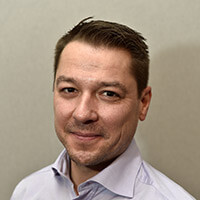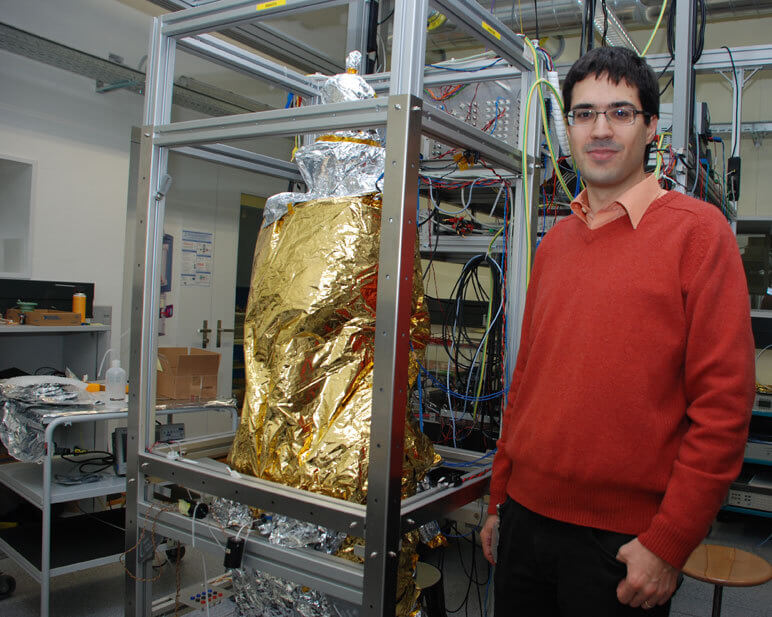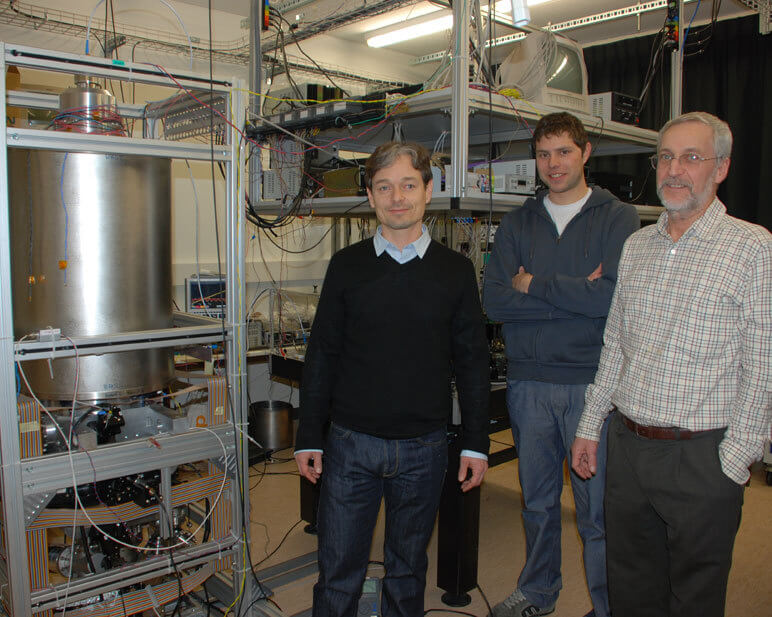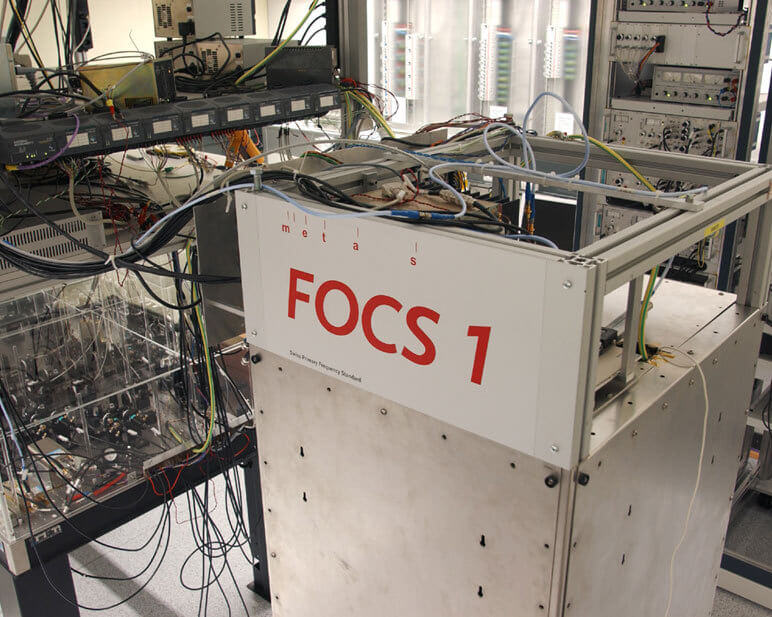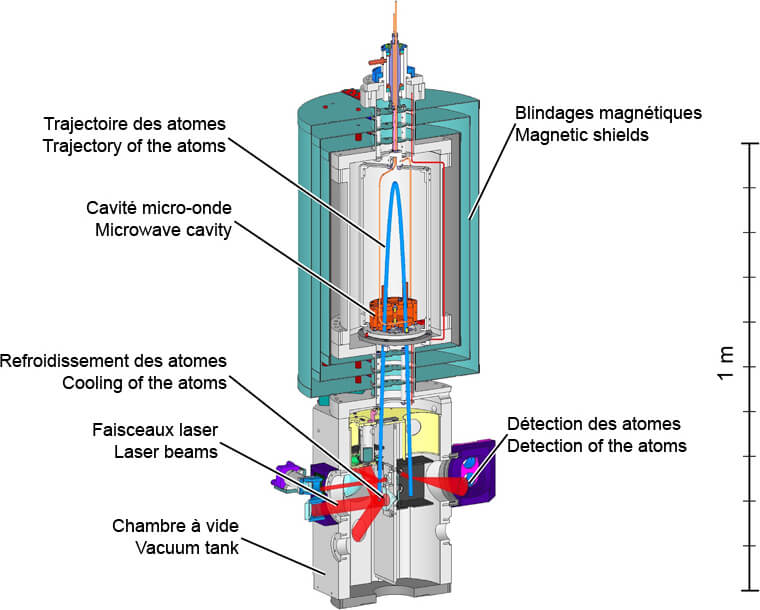“Everyone knows where in the week or month they are. What we’re interested in is where in the second we are!” André Stefanov may look like the eternal student; behind this laidback exterior is a scientist at the head of his field. As director of the Time and Frequency Laboratory of the Swiss Federal Office of Metrology (METAS), he spends his days counting not seconds but nanoseconds (one billionth of a second). Assisting him in his task is an atomic clock so precise that it deviates by one second every 30 million years. Developed by Neuchâtel University, and currently in its test phase, this clock is unique in the world. It has been dubbed the Swiss Continuous Fountain (FOCS), a poetic name for a machine whose function is anything but decorative.
The days are getting longer
Until the mid-twentieth century, astronomers had the monopoly on time. The second, as a unit of measurement, was defined so that the mean solar day (from zenith to zenith) lasted 86,400 seconds. Locked away in their observatories, assisted by mechanical precision clocks, astrophysicists were the sole guardians of time’s temple. Until, that is, a scientific revolution.
With atomic clocks, the first of which appeared in the late 1940s, came evidence of the unthinkable: the duration of the Earth’s revolution around the Sun isn’t regular. What’s more, the speed of the Earth’s rotation on its axis is slowing. The reason: the tides and the varying distance between the Earth and the Moon. “The days are now two milliseconds longer than a century ago,” comments André Stefanov with a smile. The impact of this is such that, for clock time and the Earth’s rotation to remain synchronised, the International Earth Rotation and Reference System Service (IERS) must sporadically add an intercalated or leap second to universal time. The last leap second was added on December 31st, 2008. Hence, the time one second after 00:59:59 wasn’t 01:00:00 but 00:59:60. Twenty-four leap seconds have been added to time since the system was adopted in 1972.
And so the scientific community had to face a disconcerting fact: astronomical phenomena were no longer a sufficiently reliable basis for defining units of time. Hence they were replaced by an atomic phenomenon: the oscillation of the caesium 133 atom. In 1967, twenty years after its debut, the atomic clock was adopted as the instrument of time measurement. The first consequence of this was to redefine the second. “When a caesium atom electron moves from one orbit to another, its frequency remains the same,” André Stefanov explains. “Hence the second was defined as equal to 9,192,631,770 periods of oscillation of this frequency.” Why not one more period, or one less? “It is a convention,” admits Dr Stefanov. “When defining something more precise than before, in this case the new second versus the old one, the final solution has to be an arbitrary value.”
Coordinated Universal Time
Time is now the physical quantity that can be most precisely measured. At METAS, five “commercial” atomic clocks count time by numbering each second. Their conventional starting point is 00:00:00 on January 1st in year 1. Every five days, the Time and Frequency Laboratory of the Federal Office of Metrology sends the mean measurement of these clocks to the International Bureau of Weights and Measures (BIPM) which gathers data from 350 clocks worldwide. The average of these averages gives Coordinated Universal Time (UTC).
Never content, scientists have developed primary frequency standards to check these clocks’ rate. These are not clocks, as they don’t count seconds, but provide the absolute reference for the duration of the second. Their “heart” beats at 9.2 Gigahertz (9.2 billion Hz). By way of comparison, a mechanical watch movement beats at between three and five Hz, a quartz movement at 32,768 Hz. Each laboratory regularly adjusts the rate of its commercial atomic clocks to that of the primary frequency standard.
Switzerland, however, decided to do things a little differently. “Because we began working on our primary standard after everyone else, we chose a different route,” explains Pierre Thomann, his eyes sparkling at the thought. Director of the Time-Frequency Laboratory at Neuchâtel University, he also leads the FOCS project. Appointed by METAS in 1992, the professor and his team spent ten years developing and building a standard based on a different technology. “Of course we could have copied others, but we thought it would be far more interesting to use a different concept then compare results.”
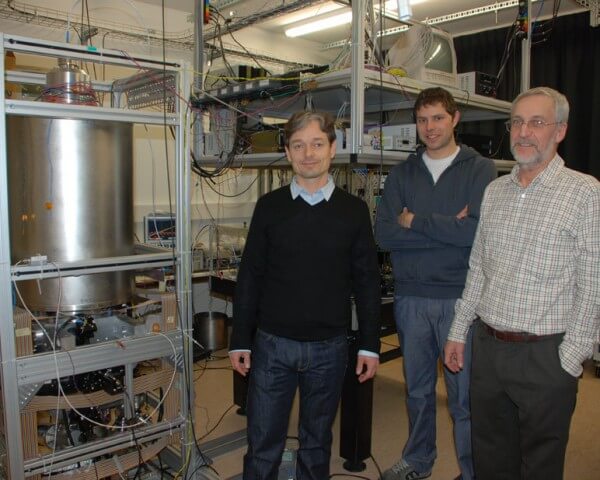
Future applications in space
Traditional primary frequency standards are known as pulsed fountains. A cloud of caesium 133 atoms is vertically launched into a vacuum. Their velocity is slowed by laser beams. They are then measured as they drop. Rather than launch atoms in batches, the Swiss opted for a continuous stream… not unlike the water jet on Lake Geneva. The atoms, slowed by laser beams, are vertically launched then fall back through a hole where they are measured. This apparently simple system is, in reality, highly complex. Not one but two FOCS are currently being tested, one by METAS and one by the University of Neuchâtel’s Institute of Physics.
So is this method more precise than pulsed fountains? “The aim is to be as accurate as possible and at least as precise as existing clocks, which coincide by approximately 10-15 second,” Pierre Thomann explains. “Two clocks with this degree of precision should run for 30 million years before gaining or losing one second, and this with no prior adjustment one to the other. One of our biggest motivations is to achieve the same degree of precision with a clock that functions in a different way. Scientists are more convinced their clocks are accurate if this precision is achieved in several different ways, as opposed to several times in the same way.”
Even at this level of precision, scientists want more. Already, standards that use mercury or aluminium atoms are producing relative errors of 10-17 second. Behind this seemingly abstract race for precision lie some very real stakes. As André Stefanov points out, “METAS’ role is to reckon and emit time. One of the ways we emit time is through our HBG time signal transmitter in Prangins, which automatically adjusts clocks. This service will be discontinued at end 2011 although computers will still be able to synchronise with Swiss time online at ntp.metas.ch. We also serve clients – banks, precision industries, multinationals, laboratories and telecom operators – whose operations require extremely precise time measurement.” However, as Pierre Thomann concludes, “The applications of the future are in space. The American Global Positioning System (GPS) and the European Galileo system require extreme precision. At the speed of light, one nanosecond equals 30 centimetres… and both these systems aim to locate points on Earth to the nearest centimetre!”







